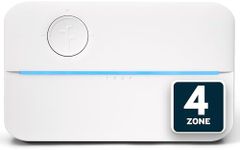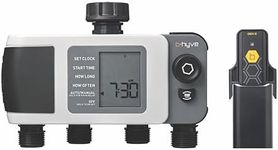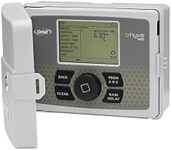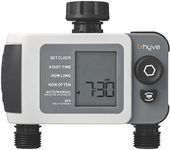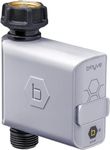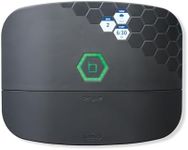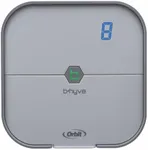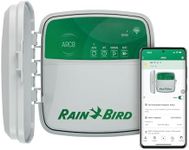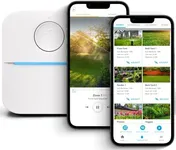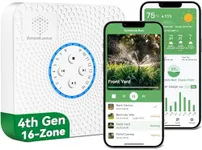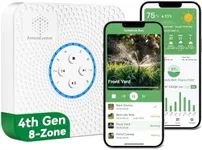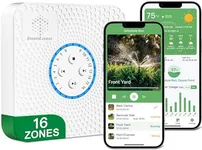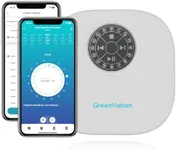Buying Guide for the Best Smart Irrigation Systems
Choosing the right smart irrigation system can make a significant difference in maintaining a healthy garden or lawn while conserving water and reducing utility bills. Smart irrigation systems use advanced technology to monitor weather conditions, soil moisture, and plant water needs to optimize watering schedules. When selecting a smart irrigation system, it's important to consider several key specifications to ensure it meets your specific needs and preferences.Controller TypeThe controller is the brain of the smart irrigation system, determining when and how much to water. There are two main types: weather-based and soil moisture-based controllers. Weather-based controllers adjust watering schedules based on local weather data, while soil moisture-based controllers use sensors to measure the moisture level in the soil. If you live in an area with unpredictable weather, a weather-based controller might be more suitable. For those who want precise control over soil conditions, a soil moisture-based controller is ideal.
ConnectivityConnectivity refers to how the smart irrigation system communicates with other devices and the internet. Most systems connect via Wi-Fi, allowing you to control and monitor your irrigation system remotely through a smartphone app. Some systems also offer Bluetooth connectivity for local control without internet access. If you want the convenience of adjusting your system from anywhere, look for a model with reliable Wi-Fi connectivity. For simpler, on-site control, Bluetooth might be sufficient.
ZonesZones refer to the different areas of your garden or lawn that can be watered independently. The number of zones a system can support is crucial, especially for larger properties with diverse plant types and watering needs. Systems typically range from 4 to 16 zones or more. If you have a small garden, a system with fewer zones will suffice. For larger properties with varied landscaping, opt for a system that supports more zones to ensure each area gets the appropriate amount of water.
Weather IntegrationWeather integration allows the irrigation system to adjust watering schedules based on real-time weather data, such as rainfall, temperature, and humidity. This feature helps prevent overwatering and conserves water. Systems with advanced weather integration can access local weather stations or use built-in sensors. If you live in an area with frequent weather changes, a system with robust weather integration is essential to maintain optimal watering schedules.
Smart Home CompatibilitySmart home compatibility means the irrigation system can integrate with other smart home devices and platforms, such as Amazon Alexa, Google Assistant, or Apple HomeKit. This allows for voice control and seamless automation with other smart devices. If you already have a smart home ecosystem, choosing a compatible irrigation system can enhance convenience and control. For those new to smart home technology, consider whether you might expand your smart home setup in the future.
Ease of Installation and UseEase of installation and use refers to how simple it is to set up and operate the smart irrigation system. Some systems come with user-friendly apps and clear instructions, while others might require professional installation. If you're a DIY enthusiast, look for a system with straightforward installation and an intuitive interface. For those who prefer a hassle-free setup, consider a system that offers professional installation services.
Water Usage ReportsWater usage reports provide insights into how much water your irrigation system is using, helping you track and manage water consumption. This feature can be particularly useful for identifying areas where you can save water and reduce costs. Systems that offer detailed water usage reports can help you make informed decisions about your watering practices. If you're focused on water conservation and efficiency, look for a system with comprehensive reporting capabilities.
